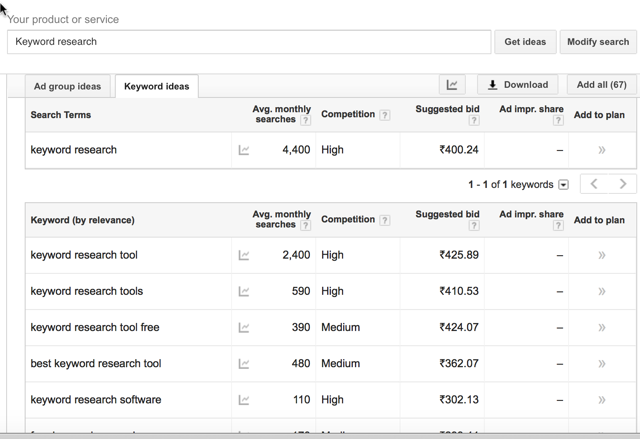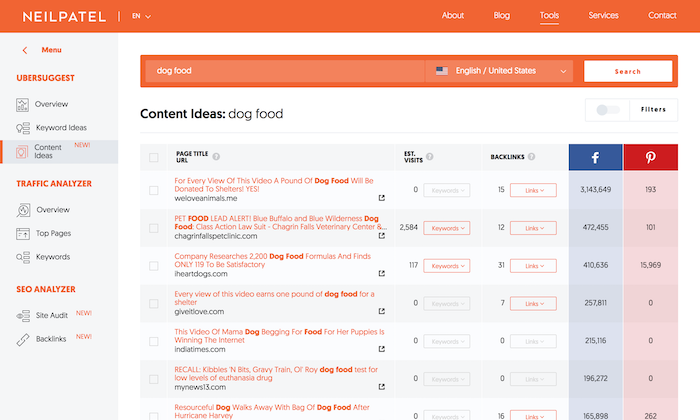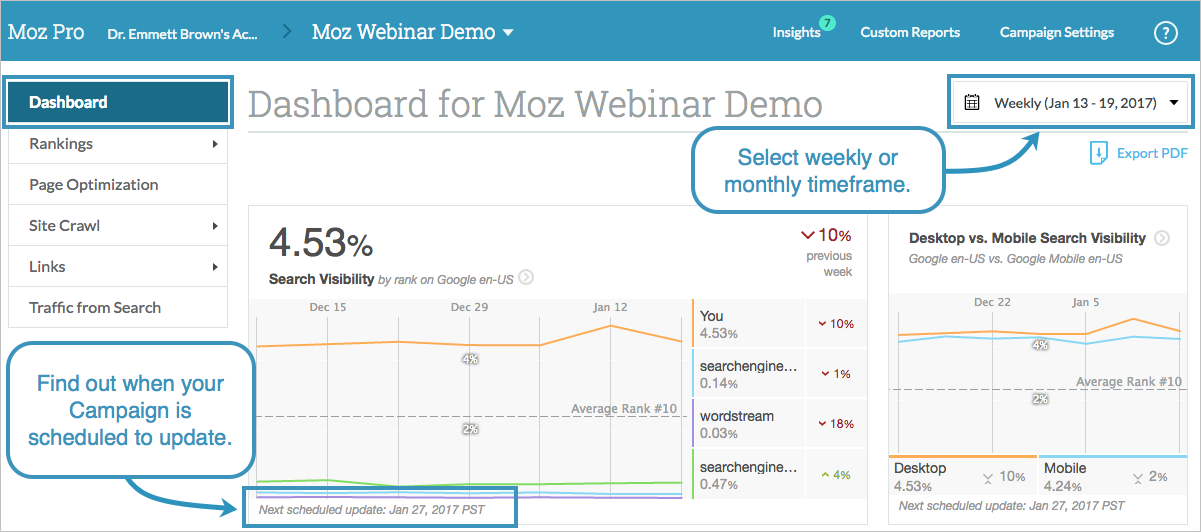Keywords are those terms that we use in search engines to find some material, document, article, video or website that interests us for Keyword Research for seo
We don’t usually write in the search engine: Learn to make a delicious Sunday breakfast . We prefer shorter terms and words like Sunday breakfast or delicious breakfast or learn to make breakfast , then we have three different keywords.
Each keyword offers different results, even the results change according to each region. Imagine you are looking for a delicious breakfast and Google gives you results of coffee with cookies. In some cultures and regions that is perfect, but in many regions, that would be just a snack.
In this post we will tell you how to find the best keywords , those that your potential buyers look for, those that will make your business known and can sell more.
Intention to search: tips for you to hit the spot!
Search intentions is what people want, want and want to have, solve or buy.
As your business dialogues more and better with these intentions, you will have more people knowing you and most likely buying your product .
For this it is important:
1. Know the buyer
Your buyer person is the representation of your potential buyer. This definition includes people’s dreams, pains and desires, it is not simply a description of your client’s profile.
Knowing what people dream and want, those things they need to solve, it will be easier for you to think about the search intention they have when they enter Google.
I also leave you a video where Rosario shows you how to create your buyer person.
2. Define the niche
Your niche is the context in which you interact with your customers and your competition. These three elements are part of your business and you must learn to dialogue with them.
In regards to your customer, we have already given you advice about the buyer person. Now, when you have to think about your competition, you can see it as enemies or as opportunities.
Here I show you how to see your competition as an opportunity: know them, select at least five companies or businesses that are within your niche and that offer products similar to yours, understand what their proposals are and the particularities.
This is where you and your story come in. To make you stand out in your niche, think about what only you can offer, and that has to do with your own story. Of course there will be meeting points, but since your story is unique, what comes out of it will be too.
Normally that unique, has to do with your life story, with your experiences, with the path you have traveled, that is your differential. Think about it and fill it in your product!
3. Know the words long tail and head tail
A subsequent step to the definition of the niche is the knowledge of the words that are part of it. For example, if I put the words notebook, student, eraser, teacher, pencil and blackboard, I am probably referring to a school. We are in the semantic field of the education niche.
With digital products it is no different. If a person is interested in an educational product, they will probably place the word course on google, but if they do not have time to move to the place of the classes and prefer to do it remotely, they will probably place the course online.
Perfect! But that person wants to take an online course on a specific topic, for example, about learning to make cakes. With that, the person will probably place online course to make cakes.
Do you see how the search terms are lengthening? That depends on the intention of the person. When it is a less specific thing like cake-making courses, we say that a keyword head tail is being used, but if the expression is specific, such as online course to make cakes for parties and birthdays, we call it long tail .
Ideally, your business uses long tail and head tail keywords. The most specific give short-term results because people find you more quickly, but the most general can help you make a space in your niche and even, with brand awareness , get customers who buy with you in the long term.
4. Register the keywords
It is no use defining the niche and the words that are part of it if you do not document and record each action.
Here at Social Sutra we have two ways of doing it. The first is to create a calendar or editorial program , as well as this:
It is important to put the name of the post, the keyword, the traffic you have and the day of publication. Over time, you will see what other data is important.
The second strategy is a keyword form where the two most important metrics are traffic and difficulty. In general, words with more traffic and less difficulty are better for short-term results.
You can join these two metrics and classify them from 1 to 5, for example, where 1 are those with the highest traffic and least difficulty and that’s where you are.
However, those decisions depend a lot on your marketing strategy, your niche, your competition and the type of business you have.
5. Know how to use the tools
There is no secret or mystery in this. There are several tools , functions and results they can offer you. You choose the one that suits you and fits in your pocket.
Let’s recap:
You defined your buyer person and the search intention, next to the semantic field that are the words related to your niche. This is where the tools come in.
What you think is important, but not always what you believe, is what your buyer person also believes. The tools serve as that contrast that will allow you to confirm, deny or enrich your point of view and strategies. That’s why they are so necessary!
Here are some of you.
Keyword Tools:
1. Trends
Google Trends is not properly for Keyword Research for seo tool, but it helps you at first to enrich the intuition and hypotheses about the words that your audience probably uses when they want a product from your niche.
It also helps you understand searches by countries, states and cities. This can further enrich your perspective on the keywords your audience uses.
Google Trends will show you the trends. With the trends you will know if a Keyword Research for seo has searches or not, but you have to be careful with them and try to see them over time, because probably a product that teaches to make drinks or refreshing drinks, is more searched in summer and a course about wines, be more sought after in another period.
2. Google Keyword Planner
The Keyword Planner is already a keyword tool itself, with it you can select the language and countries where you want to search the keywords.
Keyword Planner will deliver the results on your keywords, traffic and the level of competition, that is, if there are many or few people disputing the first places with that same keyword.
This tool will also give you the related keywords, showing you the opportunities you have to write content with other keywords.
Remember to document and plan so that week by week you can write about these topics and gain more and more visibility and customers.
In the entry menu you have two options. Discover new keywords and know the search volume and forecasts. I suggest entering the first one and placing the keyword you want.
1. In keywords (by relevance) it shows you the keyword data in the country and language you have searched.
Remember to configure those filters, because otherwise you will be looking for wine courses in England and you will see only the search volume of people looking for wine courses in England, but in Spanish.
2. Eye! There are businesses that know how to use this function well, because they can place keywords in an unofficial language of a country. For example, a creative writing course in Spanish, but in Switzerland, where there is an important community of Spaniards who are writers. In this section you will see the Keyword Research for seo to trends, their volume and competence.
Only you will know which Keyword Research for seo to start with, but choose several of the suggestions. That way, your content is more complete and your product manages to deliver more wealth and attract more people.
3. In Competition you will have an idea of how more or less disputed your keyword is. There are those who start with those who have less competition and there are those who do not. That is also your decision!
But if the competition is high it will probably take longer to find results and maybe when you start a business, you need some more short-term results.
https://social-sutra.com/lead-management/what-is-a-marketing-qualified-lead-how-to-determine-mqls/
3. SEMrush
This tool has endless functions and can give you data from the most basic to the most advanced.
The data that I suggest you analyze are those that appear in the Keyword Analysis menu.
1. In the Keyword Analysis menu you will find an overview, as shown in the previous image.
You will also find other tools to think about creating ads on Google, but as the objective of this post is to help you do this keyword search without spending so much money.
2. The organic search shows you the results that people place in the Google search engine without having clicked on the ads or paid advertising. It shows you the search volume and the number of results.
There is no magic number of search volume. It depends on your niche, but you can compare with the search volume of number 3, where the keywords appear in other related phrases.
3. Matching keywords in the phrase are those phrases that can help you think a phrase with the same words, but in another order or with another word that you had not thought about.
In this section you will also find the traffic volume of each sentence.
4. Related keywords . In this section, which is my favorite, you will find ideas on what other topics your potential clients are looking for.
Related searches give you ideas when creating a product and perfecting it. It can even give you ideas on how to sell it.
In this case, for example, we see how people, in addition to wanting a wine course, are not so interested in wine types, but in wine tasting.
4. UberSuggest
UberSuggest is a free keyword tool product of the effort of Neil Patel, one of the most important marketing professionals in the world.
In this tool you can see, as in the others, the search volume of the keyword per month. But if you slide down you will find the richness of this free tool.
UberSuggest offers you Keyword Research for seo ideas along with the best positioned content. It also shows you the importance on Facebook and if there is any image of your competitors on the Pinterest network.
This allows you to visit them and understand what those contents have that can be so attractive, not to copy them of course, but so that the best with your proposal.
5. MOZ
This tool has a free version that shows you to do some Keyword Research for seo as well as the others, namely: volume, related keywords and traffic.
But an interesting thing is the form of presentation in bar, which allows to identify in a clearer way the characteristics of the keyword you want.
1. First you must enter Keyword Explorer , which is the basic search tool. Moz has many tools and plugins, including a learning community that is worth browsing through.
2. Priority is a combination of the volume, difficulty, opportunity and importance metrics that Moz’s analysis of the keyword already gives you, in case you want to use it.
This analysis is important when you are starting, because it gives you an authoritative opinion about the possibilities of using your business keywords.
3. SERP Analysis : In this section you will find the analysis of the domains of your competition. That will give you an idea of how convenient or not it can be to compete with them for the same for Keyword Research for seo
But again we say it, the decision is yours!
With the right keywords, you will reach more people, your business will have more visibility and, consequently, more chances of sales and new business.
Little by little you will conquer more customers and with more customers, more sales!
Until next time!








